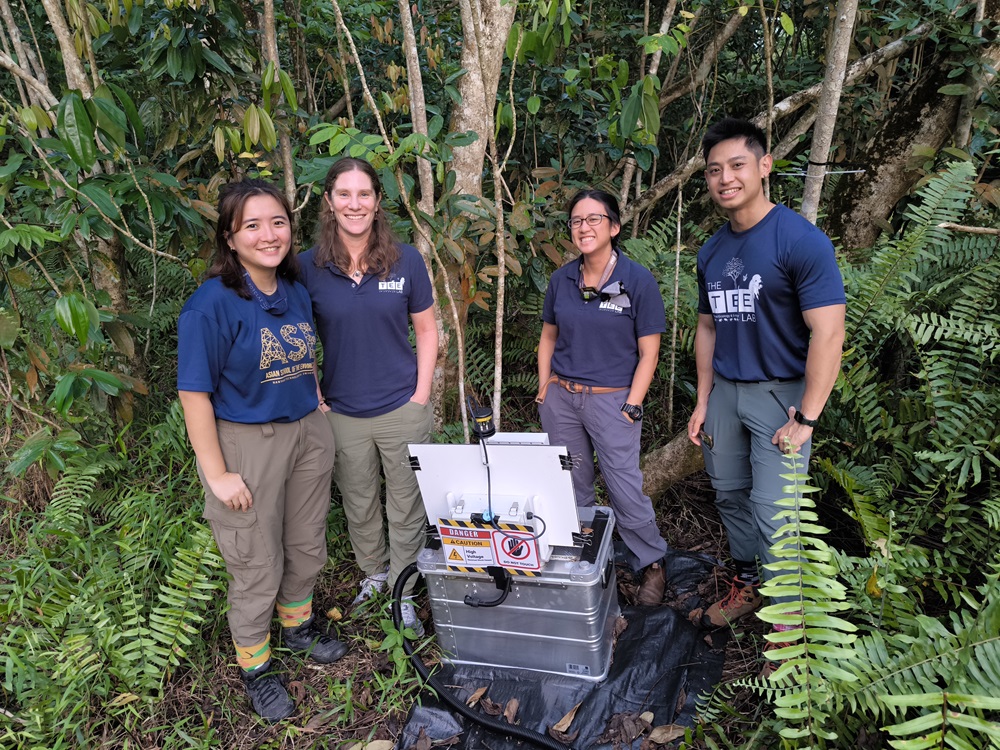Scientists turn to AI and moths to assess health of ecosystems

Image: NTU Asian School of the Environment Project Officer Ng Wan Lin, Associate Professor Eleanor Slade, PhD student Nicole Su-Yin Dorville, and Research Fellow Sean Yap. In the middle is an AI biodiversity monitoring unit set up on the NTU campus at the edge of the forest, in the western catchment area.
Local researchers are now shining a spotlight on moths, which are critical in helping to pollinate plants and flowers at night, taking over the role played by butterflies and bees during the day, said NTU Assoc Prof Eleanor Slade of The Asian School of the Environment. They are also an important food source for bats and birds, and their presence is a good indicator of the health of an ecosystem.
To help determine the moth species found in Singapore, 10 remote monitoring stations have been placed around the island, each fitted with an ultraviolet (UV) light source to attract the insects and a camera to photograph them automatically. With the help of artificial intelligence, the moth species can be identified in real time after establishing a local database, with images from the citizen science platform iNaturalist.
There are between 400 and 1,000 moth species in Singapore, but since most of them are active at night, they are not very well studied, said Ms Nicole Su-Yin Dorville, who is doing her PhD in novel methods for monitoring the response of biodiversity to environmental change. The data from the monitoring systems will feed into a larger study helmed by Britain’s Centre for Ecology and Hydrology and the Alan Turing Institute, which is looking to better establish moth populations in tropical regions where there are large numbers of understudied moth species.
As part of the AMBER (AI-assisted Monitoring of Biodiversity using Edge-processing and Remote sensors) project, a network of 40 monitoring systems will be deployed in places that are biodiversity hot spots, including Singapore, Kenya, Costa Rica, Japan and Thailand. Funded by the Abrdn Charitable Foundation, the project looks to develop and trial cutting-edge technology for monitoring biodiversity.

.tmb-listing.jpg?Culture=en&sfvrsn=55153609_1)




